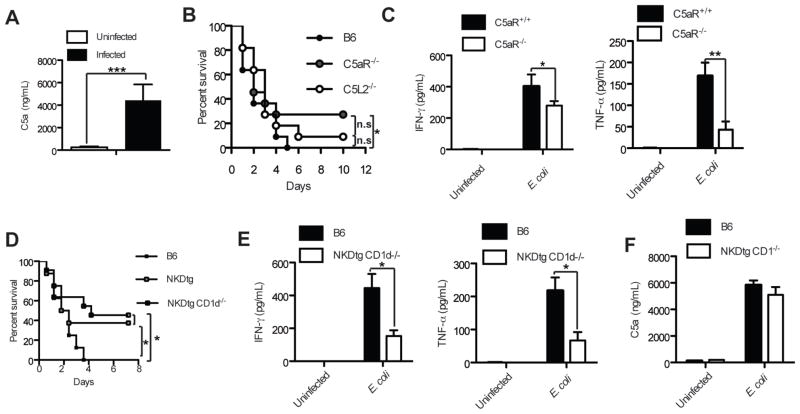Figure 1.
Complement receptor C5aR, NK and NKT cells augment IFN-γ and TNF-α responses and decrease survival of mice during E. coli-sepsis. (A) Rapid release of C5a upon i.p. E. coli-infection. C5a levels were determined in plasma 1h after infection; n=6. (B) Absence of C5aR improves survival. The survival of B6, B6 C5L2−/− and B6 C5aR−/− mice was followed over time; n=11/group. (C) Decreased inflammatory serum cytokines in C5aR-deficient mice. Serum levels of IFN-γ and TNF-α from B6 mice were determined 4 h after infection; n=8–9/group. (D) Lack of NK and NKT cells improves survival. The survival of B6, NK cell deficient NKDtg and NK and NKT cells deficient NKDtg CD1d−/− mice was followed over time; n=13–14/group. (E) Decreased inflammatory serum cytokines in NKDtg and NKDtg CD1d−/− mice. Serum levels of IFN-γ and TNF-α from B6 and NKDtg CD1d−/− mice were determined 4h after infection; n=4/group. (F) Genetic deletion of NKT and NK cells does not affect the release of C5a. C5a levels from B6 and NKDtg CD1d−/− mice were determined in plasma 1h after infection; n=5/group. Statistical significance was calculated using either the student’ t-test (in A, C, E and F) or the Mantel-Cox test (in B and D). All experiments were either repeated either once or twice with similar results.

